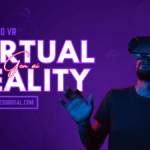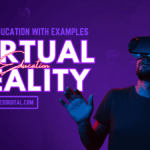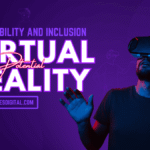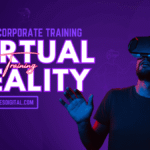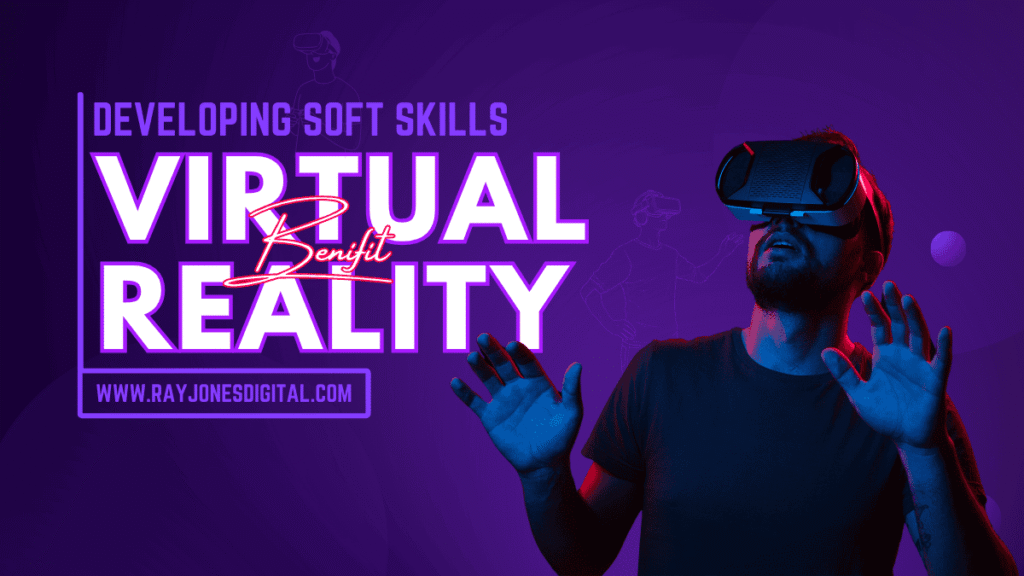
Virtual reality has moved far beyond gaming and entertainment to become a powerful tool for professional development. Companies across industries are discovering that VR creates unique opportunities to Developing Soft Skills — those essential interpersonal abilities that determine workplace success. From public speaking to leadership, virtual environments offer safe spaces to practice, fail, and improve without real-world consequences.
This comprehensive guide explores how VR technology is revolutionising soft skills training, examining specific applications, benefits, and real-world results that demonstrate why virtual reality represents the future of professional development.
What Are Soft Skills and Why Do They Matter?
Soft skills encompass the interpersonal, communication, and emotional intelligence abilities that enable effective collaboration and leadership. Unlike technical skills, which focus on specific tools or processes, soft skills determine how well individuals work with others and adapt to changing circumstances.
Research consistently shows that soft skills drive career success more than technical expertise alone. A study by Harvard University found that 85% of career success comes from well-developed soft skills, whilst technical skills account for only 15%. Despite this importance, many professionals struggle to develop these abilities through traditional training methods.
Traditional soft skills training faces several limitations. Classroom lectures provide theoretical knowledge but lack practical application opportunities. Role-playing exercises often feel artificial and fail to create realistic pressure situations. Feedback comes too late to be immediately actionable, and learners cannot repeat challenging scenarios until they master them.
VR technology addresses these limitations by creating immersive environments where learners can practice soft skills in realistic situations. Virtual scenarios feel authentic enough to trigger genuine emotional responses whilst remaining safe enough to encourage experimentation and learning from mistakes.
How VR Transforms Soft Skills Development
Virtual reality creates controlled environments where learners can practice interpersonal skills without fear of real-world consequences. These simulations replicate workplace situations with enough realism to trigger genuine responses whilst providing the safety net necessary for effective learning.
Realistic Practice Scenarios
VR scenarios recreate challenging workplace situations that would be difficult or impossible to practice in real life. Learners can handle difficult customer complaints, navigate team conflicts, or deliver presentations to virtual audiences that respond realistically to their performance.
The technology enables repeated practice of the same scenario with different variables. A learner struggling with conflict resolution can practice the same difficult conversation multiple times, experimenting with different approaches until they find effective strategies.
Virtual environments provide consistent experiences across all learners. Everyone faces the same challenges and receives equivalent practice opportunities, ensuring fair and standardised training regardless of location or available resources.
Immediate Feedback and Analysis
VR systems capture detailed performance data that would be impossible to collect in real-world training. Eye tracking reveals where learners focus their attention, voice analysis measures confidence levels, and gesture recognition evaluates body language effectiveness.
This data enables immediate, specific feedback that helps learners understand exactly what they did well and where they need improvement. Instead of waiting for instructor evaluation, learners receive instant insights that reinforce positive behaviours and correct mistakes immediately.
Performance analytics track progress over time, showing learners how their skills develop through repeated practice. This objective measurement motivates continued improvement and helps identify areas needing additional focus.
Safe Learning Environment
VR creates psychologically safe spaces where learners can make mistakes without damaging real relationships or facing actual consequences. This safety encourages experimentation and risk-taking that leads to genuine skill development.
Learners can practice sensitive conversations, such as delivering negative feedback or addressing performance issues, without affecting real team dynamics. This practice builds confidence and competence before facing similar situations in actual work environments.
The virtual environment eliminates external pressures that might inhibit learning in real-world settings. Learners can focus entirely on skill development without worrying about their reputation or career impact.
Key Soft Skills Enhanced Through VR Training
Communication and Presentation Skills
VR presentation training places learners in front of virtual audiences that respond realistically to their performance. Poor eye contact, nervous gestures, or unclear speech trigger appropriate audience reactions, providing immediate feedback on presentation effectiveness.
Virtual audiences can be customised to match specific scenarios. Learners might practice presenting to hostile board members, distracted colleagues, or enthusiastic customers, each requiring different communication approaches.
The technology enables practice with various presentation formats, from formal speeches to informal team meetings. Learners can experiment with different speaking styles and observe their impact on audience engagement.
Advanced VR systems provide real-time coaching during presentations, offering suggestions for improvement without interrupting the flow of practice. This guidance helps learners develop better habits whilst building confidence.
Leadership and Management Skills
VR leadership training creates scenarios where learners must guide teams through challenges, make difficult decisions, and inspire others towards common goals. These situations require the same judgment and interpersonal skills needed in real leadership roles.
Virtual team members respond dynamically to leadership styles, showing how different approaches affect team morale and performance. Authoritarian leadership might complete tasks quickly but reduce team satisfaction, whilst collaborative approaches might take longer but create stronger team bonds.
Crisis management scenarios test leaders’ ability to make decisions under pressure whilst maintaining team cohesion. These high-stress situations reveal leadership strengths and weaknesses that might not emerge in lower-stakes training.
Conflict resolution training presents leaders with team disputes they must navigate fairly and effectively. Virtual scenarios can escalate or de-escalate based on the leader’s responses, demonstrating the consequences of different intervention strategies.
Emotional Intelligence and Empathy
VR emotional intelligence training uses virtual characters that express subtle emotional cues learners must recognise and respond to appropriately. These interactions develop the ability to read others’ feelings and adjust behaviour accordingly.
Virtual patients, customers, or colleagues display various emotional states that require empathetic responses. Learners practice active listening, appropriate responses to distress, and supportive communication techniques.
The technology enables perspective-taking exercises where learners experience situations from different viewpoints. Understanding how actions affect others builds empathy and improves interpersonal relationships.
Emotional regulation scenarios challenge learners to maintain composure under pressure. Virtual situations designed to provoke frustration or anger teach strategies for managing emotional responses professionally.
Teamwork and Collaboration
VR collaboration training places learners in virtual teams where they must work together to solve problems or complete projects. These scenarios require the same cooperation and communication skills needed in real teams.
Virtual team members have different personalities, work styles, and cultural backgrounds that learners must navigate effectively. This diversity mirrors real workplace challenges and develops cultural competence.
The technology enables asynchronous collaboration where team members can work together despite being in different locations or time zones. This flexibility prepares learners for modern remote work environments.
Collaborative problem-solving scenarios require teams to pool knowledge, debate solutions, and reach consensus. These activities develop negotiation skills, compromise abilities, and shared decision-making capabilities.
Industry Applications and Success Stories
Healthcare: Developing Bedside Manner
Healthcare professionals use VR to practice patient interactions that require both technical competence and interpersonal sensitivity. Virtual patients present various emotional states and cultural backgrounds that healthcare providers must navigate respectfully.
Medical students practice delivering difficult news, such as terminal diagnoses or treatment failures, in virtual environments where they can learn appropriate communication techniques without causing actual distress.
The technology enables practice with diverse patient populations, helping healthcare providers develop cultural competence and reduce unconscious bias in patient care.
Education: Enhancing Teaching Skills
Educational institutions use VR to help teachers develop classroom management skills and improve student engagement techniques. Virtual classrooms present various challenging scenarios that teachers must handle effectively.
Teachers practice managing disruptive students, facilitating group discussions, and adapting to different learning styles in virtual environments. This practice builds confidence and competence before facing similar situations with real students.
The technology enables practice with diverse student populations, helping teachers develop inclusive teaching strategies and cultural sensitivity.
Corporate Training: Building Sales Excellence
Sales professionals use VR to practice customer interactions, objection handling, and closing techniques with virtual prospects that respond realistically to different approaches.
Virtual customers present various personalities and buying styles that salespeople must adapt to effectively. This practice develops flexibility and improves success rates in real sales situations.
The technology enables practice with high-value prospects or difficult customers that would be impossible to replicate in traditional training environments.
Manufacturing: Strengthening Safety Communication
Manufacturing companies use VR to train supervisors in safety communication and hazard recognition. Virtual factory environments present safety scenarios that require clear communication and decisive action.
Supervisors practice delivering safety briefings, addressing violations, and responding to emergencies in virtual environments where mistakes don’t risk actual safety.
The technology enables practice with diverse workforces, helping supervisors develop communication strategies that work across different cultural and linguistic backgrounds.
Measuring VR Training Effectiveness
Performance Metrics and Analytics
VR training systems capture detailed performance data that provides objective measures of skill development. These metrics go beyond traditional training evaluations to provide comprehensive insights into learning progress.
Engagement metrics track how actively learners participate in training scenarios. High engagement levels correlate with better learning outcomes and skill retention.
Behavioural analytics measure specific actions and responses during training scenarios. This data reveals which techniques learners use effectively and which need improvement.
Confidence measurements track how learners’ self-assurance develops through repeated practice. Increased confidence often translates to better real-world performance.
Real-World Application Assessment
The ultimate test of VR training effectiveness lies in real-world performance improvements. Companies measure how VR-trained employees perform compared to those receiving traditional training.
Customer satisfaction scores often improve when employees receive VR soft skills training. Better communication and empathy skills lead to more positive customer interactions.
Employee retention rates may increase when staff feel more confident and competent in their interpersonal skills. VR training can reduce job-related stress and improve workplace satisfaction.
Productivity measurements reveal how improved soft skills affect team performance and collaboration effectiveness. Better communication and teamwork often lead to improved business outcomes.
Return on Investment Analysis
Companies calculate VR training ROI by comparing costs with measurable benefits. These calculations consider both direct cost savings and indirect benefits such as improved employee satisfaction.
Reduced recruitment costs occur when employee retention improves through better soft skills development. Confident, competent employees are less likely to leave their positions.
Improved customer retention results from better service delivery enabled by enhanced soft skills. Satisfied customers generate more revenue and reduce acquisition costs.
Enhanced team productivity creates value through improved collaboration and reduced conflicts. Better interpersonal skills lead to more efficient work processes and higher output quality.
Overcoming VR Training Challenges
Technical Implementation Barriers
VR training implementation requires significant technical infrastructure and expertise. Companies must invest in hardware, software, and technical support to create effective training programmes.
Content development costs can be substantial, especially for customised training scenarios. Companies must balance development expenses with expected training benefits.
Technical support requirements include maintaining VR equipment, updating software, and troubleshooting user issues. These ongoing costs must be factored into training budgets.
User Adoption and Acceptance
Some employees may resist VR training due to technology anxiety or preference for traditional training methods. Change management strategies must address these concerns effectively.
Motion sickness and discomfort can affect some VR users, limiting training effectiveness. Companies must provide alternative training options for affected employees.
Learning curve requirements mean employees need time to become comfortable with VR technology before focusing on skill development. Training programmes must account for this adjustment period.

I am Ray Jones Digital
My current occupations: a Digital Marketer, Local SEO expert, Link Builder, and WordPress SEO specialist. Shopify SEO, Ecommerce Store Management, and HTML & WordPress Developer I have been practicing the above mentioned services for more than 10 years now As an SEO expert working with your ongoing projects.
